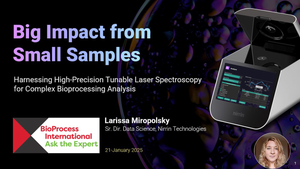
Many early-phase acquisitions do not make sense for shareholders despite having promising assets, says Lilly’s CFO Joshua Smiley. About a third of Lilly’s pipeline comes from M&A.
Speaking to attendees at the Morgan Stanley Healthcare Conference Broker Conference Call this month, Eli Lilly CFO Joshua Smiley said his firm is “interested in doing early stage clinical deals where we see compelling scientific rationale in our key therapeutic areas and that we can upgrade our pipeline.”
But deals also need to create shareholder value, he continued, and with current market prices there are plenty of acquisition targets that do not do this.

M&A strategy: Shareholders vs science. Image/Dstanton
“One of the hurdles that we see is we find something that’s really exciting scientifically in oncology or immunology or diabetes, and we think we can add a lot of value to that product through our own development or commercialization. But the price, the market value of the company, or what the founders want in terms of an asset price, doesn’t,” he said.
“It may make sense for the asset itself but it doesn’t make sense for our shareholders. We can’t create value after we pay that acquisition price.”
Smiley added: “Our goal is for our clinical portfolio at any given time to have at least a third of those assets sourced externally… We’d like to increase the volume in terms of deals we do, but we’re not going to do deals that we don’t think financially makes sense for shareholders.”
ARMO ‘reasonable bet’
In June, Eli Lilly completed the acquisition of immuno-oncology firm ARMO BioSciences for approximately $1.6 billion (€1.4 billion). The deal included the Phase III pancreatic cancer candidate pegilodecakin, a PEGylated IL-10, along with a pipeline of proprietary programs designed to activate the immune system of cancer patients to recognize and eradicate tumors.
Smiley said ARMO fits Lilly’s sweet spot, bringing a pipeline of products and appealing to shareholders.
“That was a reasonable bet to make, and if we see some success based on the data that we’ve seen so far, we think there’s a heck of a lot more value that can be created in this scenario of success. What we don’t always see is many of the assets that we see that may have the same kind of probabilities are already priced for success.”
Along with ARMO, Smiley cited the recent acquisition of early-phase oncology firm AurKa Pharma, and the investments in mRNA firm CureVac as examples of the sort of assets which work from both the science and the shareholder point of view.
About the Author
You May Also Like

schedl_b_and_w.jpg?width=100&auto=webp&quality=80&disable=upscale)
schedl_b_and_w.jpg?width=400&auto=webp&quality=80&disable=upscale)





